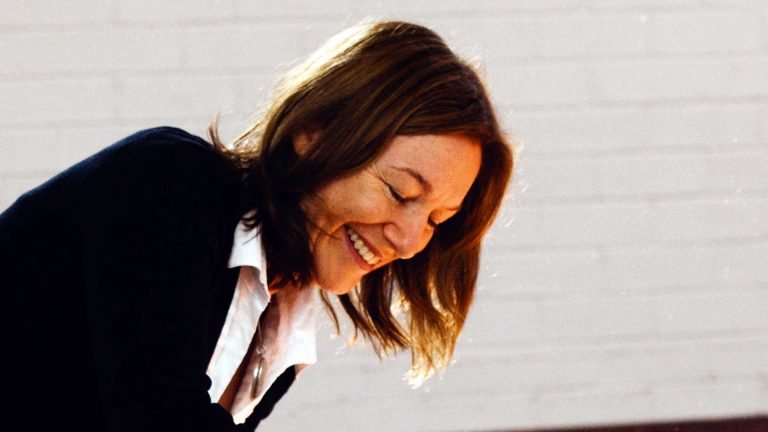
Find out why we can all benefit from Feldenkrais lessons. Awareness is the key that opens the door to change.
The Feldenkrais Method is a system of movement re-education, which improves the way we move, function, think and feel. It helps us refine and update our posture and movement habits by using our senses to discover more comfortable and efficient patterns. We sometimes call it movement re-education.
For me Feldenkrais has been a surprising, enjoyable and life changing experience, enhancing the flexibility of my mind and body. Over the last 25 years Feldenkrais has taken me on an amazing journey through the inner world of awareness.
Why I Love Teaching the Feldenkrais Method
There are many reasons why I love doing and teaching Feldenkrais lessons, for example.
Feldenkrais helps me to:
- Expand my self awareness
- Reduce pain and tension throughout my body
- Couneract stress and anxiety
- Become more efficient and powerful in my body
- Improve my breathing
- Reduce the impact of ageing
- Maintain balance in my body an dmy life
- Increase my self confidence
However there is one reason that goes a bit deeper and it may require a little more explanation.
Because the body doesn’t come with an instruction manual
Neuroplasticity and Human Learning
Humans are born with an exceptionally flexible and complex brain and nervous system. This enables us to adapt our behaviour to multiple environments, conditions and situations, which other animals could not survive. This outstanding ability of the human brain to change its structure and function through learning is known as “neuroplasticity”.
A Movement Apprenticeship
Humans have a unique brain and nervous system. Compared with other animals, we undergo a longer period of development, with far fewer instincts hard-wired into our genetic code. Instead we learn by trial and error, discovery and experimentation.
As babies, we have to learn how to feed, how to balance our heavy heads on top of our spines, how to roll over and get up onto our hands and knees. We track and focus with our eyes and reaching out with our hands for things we see, hear or smell, learning to grasp and bring things to our mouths. Eventually, we learn to sit up with a kind of grace and poise rarely seen in older humans. We playfully explore our environment, moving around by wriggling, shuffling, crawling and later walking.
It can take up to 18 months for a normal human baby to learn to walk. More complex activities such as hopping, writing, doing a handstand or playing an instrument can take us many years to master.
By contrast, most other animals develop their movement and behavioural repertoire very quickly. Baby horses for example are able to walk within a couple of hours of birth and baby dolphins can swim within minutes. They have a ‘built-in instruction manual’.
The Development of Inefficient Habits
The down-side of being born without an ‘instruction manual’ is that humans often learn to do things in a way that is the quickest and easiest at the time. It might not be the most comfortable or efficient in the long run.
The conditions in which we learn are not always optimal for supporting healthy mental and physical habits. Our bodies respond to stress by shifting into protective shapes that cause tension and result in problems down the track. For example, as children we might have learned to hunch our shoulders or tense our stomachs when we got into trouble. We may have moved into ‘flight or fight’ mode when bullied by our siblings. Repeated many times, this becomes a habit, which might be useful if you’re confronted by a tiger, not so useful when you are dealing with hurt feelings.
It is not a natural thing for humans to sit all day, but for the next twelve to thirteen years we may have spent five days a week, and forty weeks a year in hard back plastic chairs. The modern child often spends much of their weekend with their head bent over a screen, curled up on their bed, or a couch. Even something as innocuous as wearing shoes can change the shape and function of the feet and toes.
The anxiety and fear we experience in response to internal and external stressors plays an important role in the human animal. How we feel about our bodies can change our muscular habits. A particularly tall adolescent might constantly slouch to appear smaller. A similar process might occur for someone with large breasts. Broken bones, torn ligaments, things we are born with, societal or cultural expectations, self esteem, and feelings of safety can all affect the way we hold our bodies or move through space.
Physical injuries also play a role in the development of inefficient movement habits. A knee injury for example may result in protective spasm of the muscles around the painful joint. This spasm prevents excessive movement, while healing occurs. But once learned it is not always simple to ‘unlearn’. The pattern of tension may persist many years after the initial injury. It’s like wearing a splint that is never removed. We habituate to the discomfort and restriction to the point that we lose awareness that it is neither normal nor optimal.
Fortunately, there is a way to ‘unlearn’ inefficient habits, updating them with a wide variety of new movement options.
“The aim [of the Feldenkrais Method] is a person that is organized to move with minimum effort and maximum efficiency, not through muscular strength, but through increased consciousness of how movement works.”
Moshe Feldenkrais
Optimal Conditions for Learning
Because the body doesn’t come with an instruction manual, it is up to us to learn how access and direct changes to our brains. Feldenkrais helps us to improve our functioning and create a more diverse and useful range of movement habits.
Teachers of the method seek to provide the optimal conditions for learning. This includes a relaxed, comfortable, non-judgemental environment, enough time to explore and repeat the movements as well as the opportunity to experiment through trial and error. We learn from our own experience rather than by imitation.
The Feldenkrais Method uses sensory motor learning, a process very similar to how babies learn to move. Just like babies, we can learn by listening to our inner body sensations and playfully experimenting with small repetitive movements, over and over again. This is the very natural, enjoyable process by which we update our movement habits.
Using Our Senses
These senses tell us what is going on outside our bodies. Our exteroceptors on the surface of our bodies (sensors in the skin) tell us about the enviroment immediately around the body, our exteroceptors (in our skin) and our teleceptors (eyes, ears and nose).
Most of us are less familiar with our internal sense organs, which are responsible for the sensations we receive from deep beneath our skin. These are interoceptors (for sensing our internal organs) proprioceptors (for detecting body position and movement) and vestibular apparatus (a kind of internal spirit level for information about the position and movement of the head in relation to gravity.)
The Feldenkrais Method is all about using these internal sensors to experiment with and discover the most efficient, effective and comfortable movements for your body. This leads to greater self-awareness and the possibility for well organised and easier movement. A well organised body is more flexible, more powerful and more capable of adapting to new situations.
Unlocking Dormant Abilities
“To make the impossible possible, the possible easy, and the easy elegant.” Moshe Feldenkrais
What is possible through Feldenkrais is to unlock the many abilities that lie dormant in your mind and body so you can have the capacity to do whatever it is you want to do even better. As Moshe Feldenrkais liked to say, ‘When you know what you are doing, you can do what you want.’
READ MORE – Find out about Feldenkrais Classes



